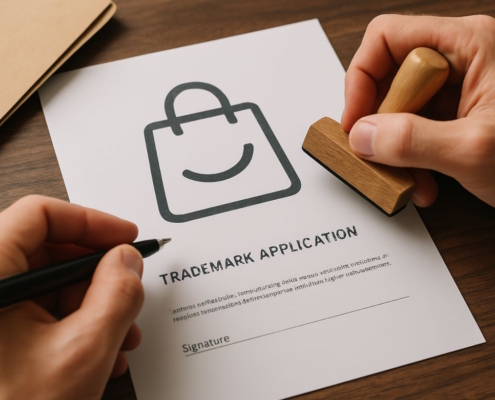The Average Revenue of Small Businesses
Revenue refers specifically to the money the business makes before accounting for expenses and taxes, amounts thereafter subtracted from the total. Small businesses with no employees makes an average revenue of $47,000. Small businesses with no employees have an average annual revenue of $47,000. For those with up to nine employees, that jumps to around $1 million annually, and small businesses with 10 to 19 employees average $2,164,000 in annual revenue. As the number of employees starts to rise, so does the average annual revenue for small business endeavors. For businesses with 10-19 employees, the average revenue was even higher at $2,164,000, while businesses with 20-99 employees broke $7 million on average. The average small business owner makes $75,000 a year. The average revenue for small business varies significantly by industry, ranging from a few thousand dollars to several million dollars annually.
According to recent reports, the average revenue for small business in the retail sector is approximately $300,000 per year. 86% of small business owners make less than $100,000 a year. The typical small business owner makes just over $70,000 a year. Self-employed small business owners make a median income of $50,000. Payscale similarly reported that the typical small business owner makes $72,000 on average. Small business owners’ salary also depends a lot on the specific industry. For example, retail store owners make $50,454 on average, while construction workers make an average of $72,346.
Factors Influencing Small Business Revenue
Many factors, such as location and target market, influence the average revenue for small business owners. Businesses owned by men have an average small business revenue of $675,643, whereas those businesses owned by women have an average revenue of $475,707. In recent years, businesses with less than $5 million in revenue saw an 8% increase in sales. Women entrepreneurs should be aware of this reality and should do research into loans for women-led businesses, as well as other resources for women entrepreneurs. In the same time period, women brought in an average of $150,000 in revenue, while men brought in an average of $6000,000. This is more than four times the amount that women produced.
Small business revenue statistics reveal stark differences across industries. Businesses in the real estate, rental, and leasing industry bring in 106% more revenue, on average, compared to the cross-overall nonemployer average. Educational services (-70%) is one of the lowest-earning industries. The lowest earning industries include administrative, support, waste management, and remediation services (-51%), and arts, entertainment, and recreation (-44%).
Challenges Small Businesses Face
Statistics show that external factors and economic conditions can significantly impact small business revenue. One study showed that over 80% of businesses failed primarily due to a lack of cash flow. Late invoice payments resulted in 89% of small and medium-sized businesses saying that they prevented business growth. These delays can prevent growth and even jeopardize a business’s survival. Inflation may be putting a damper on small businesses’ profitability, causing them to raise prices to keep up with the rising cost of materials. More than half (54%) of small business owners say inflation is a top challenge. Additionally, 90% of all U.S. adults believe that small businesses provide better experiences than large businesses in at least one area, including unique gift ideas (51%) and better customer service (50%). Entrepreneurs often aim to exceed the average revenue for small business benchmarks by focusing on niche markets and customer retention strategies. Studies show that the average revenue for small business tends to be higher in urban areas compared to rural locations. The average revenue for small business in the technology sector often surpasses that of businesses in traditional industries.
How Often Do Small Businesses Fail?
68% of small businesses survive their first two years, and nearly half survive for at least five years. However, survival rates drop off pretty drastically once businesses reach the decade mark with only 34% surviving at least 10 years and 26% surviving at least 15 years. The industries with the most success (least likely to fail) are healthcare and social assistance, with 85% staying open past their first year. According to the U.S. Small Business Administration, 80% of businesses make it past their first year. The key to keeping a small business running is to have a steady inflow of cash. Statistics back this theory up. One study showed that over 80% of businesses failed primarily due to a lack of cash flow. When assessing the health of a company, comparing its income to the average revenue for small business within its industry can be insightful.
How Many Small Businesses Make $1 Million in Revenue?
More and more nonemployer businesses – one-person companies – are cracking $1 million in revenue. As of 2023, there was an estimated 2.0% increase in nonemployer firms making $1-2.5 million in revenue. One may be intimidated by the fact that less than 2% of nonemployer businesses break the $1 million mark. However, despite the odds, the fact that so many businesses run by a single person are making that money is very impressive. It is a difficult feat running an entire business on one’s own, after all. Managing production, sales, and marketing takes a lot of work. So, the fact that so many are doing this and breaking $1 million in revenue is impressive in and of itself. In the U.S., the average revenue for small business with fewer than 20 employees is estimated to be around $450,000 annually.
The Role of Loans and Financial Assistance
Getting the right small business loans can mean the difference between success and failure in your small business. Small business owners can explore different types of loans tailored to their specific needs. Merchant cash advances (MCAs) are another option, offering quick access to funds based on future credit card sales. For instance, the Small Business Administration (SBA) offers popular loan programs like the 7(a) and 504 loans, which help businesses in need. Startups and high-growth businesses seek funding from venture capital firms or angel investors. Fundera conducted a study of hundreds of business owners and found that over 86% of them made less than $100,000 in annual income.
The Impact of Small Businesses on the Economy
Small businesses are integral to the economy, contributing 44% of U.S. economic activity. In total, 61.7 million Americans work for a small business, making up an astonishing 45.9% of the total workforce. Small businesses are the backbone of the economy, making up 99.9% of all businesses in the United States. They employ nearly half of the country’s workforce, influencing daily lives and local communities. Small companies have generated 12.9 million net new jobs over the past 25 years, accounting for two out of every three jobs added to the economy. Efforts to increase the average revenue for small business often include expanding product lines or offering subscription-based services.
What Do These Statistics Mean for Small Businesses?
A clear understanding of market trends is essential for improving the average revenue for small business in competitive markets. Some small businesses make it big, and their owners end up making millions of dollars in revenue. However, this is not typical in the small business world. It is important to remember that while small businesses may not bring in a lot of money, most do well enough to continue running for many years. If a business owner is planning on starting a small business, he or she should be aware that the number one reason for failure is a lack of cash flow. Keeping these facts in mind will help an entrepreneur create a strong business plan, hopefully turning a great idea into a successful business. Starting a business is hard work, and modest earnings may deter you, but the entrepreneurial journey offers immense rewards.






























